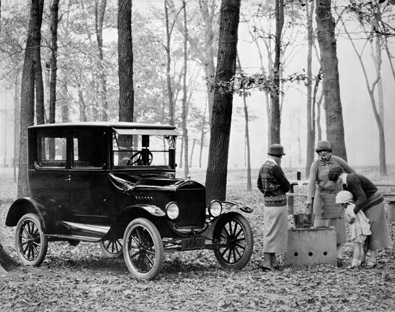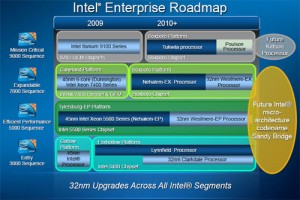 Most people involved in New Product Development agree that best results are obtained when people work effectively in teams so here are 10 guaranteed ways to improve teamworking:-
Most people involved in New Product Development agree that best results are obtained when people work effectively in teams so here are 10 guaranteed ways to improve teamworking:-
1) Locate the team together in the same room. – If people sit together they work together. It is essential that the primary form of communication is face to face. There should be some allowance for privacy but any cubicle walls should be below head level.
2) Locate the Project Manager in the same room – As the Project Manager there may be a tendency to remain distant or aloof from the team. This is counterproductive and wrong. The Project Manager should be located in the same room as the team. If She has her own office the door should be left open to allow ready access. If She sits with the team there should be a private office available for personal discussion.
3) Hold regular team meetings – although there may be some resistance to this (too much work etc) it is essential that the team meet at least once a week to discuss project status.
4) Issue meeting minutes – It helps communication if everyone knows exactly what is expected of them following the team meeting. The minutes also act as a good crib for next weeks meeting.
5) Promote a democratic culture – environments where people feel free to speak their minds openly and honestly lead to faster problem solving and decision making.
6) Promote team activities – 5 a side football or similar activities are great if everyone is fit and active but be careful to choose something EVERYONE can take part in otherwise you will alienate some team members and defeat the purpose. I have always found bowling to be a great choice which just about everyone can do.
7) Eliminate the Blame Culture – resist every opportunity to blame others and take responsibility for your own decisions. Blame Cultures are endemic in some organizations and will take time to be eradicated but the changes in performance will be immeasurable.
8) Listen twice as much as you talk – we all know the old saying about empty vessels making the most noise and no where is this more true than in Project Management. Try really listening to people and see their reaction.
9) Put the Structure in place – whether its based on PRINCE2, Project Management Institutes PMBOK or some alternative combination, Teams are more effective when they no what the rules are.
10) Keep a sense of humour – as the Project Manager nothing upsets or disorients the Team more than a panicky Manager. Keep a sense of perspective, enjoy the fun bits and lead by example.
chris@projectsguru.co.uk
www.projectsguru.co.uk




 Cambridge start up Pragmatic I.C has received over 5 million GBP in funding from Cambridge Innovation Capital, ARM plc & others to develop flexible micro-circuits which may be used to embed computing power in everyday objects and bring on the Internet Of Things revolution.
Cambridge start up Pragmatic I.C has received over 5 million GBP in funding from Cambridge Innovation Capital, ARM plc & others to develop flexible micro-circuits which may be used to embed computing power in everyday objects and bring on the Internet Of Things revolution.



 The recent internal memo “leaked” from Nokia & published on technology website Endgadget.com demonstrates the need for any corporation, but particularly those in the Technology arena, to have a continuous stream of
The recent internal memo “leaked” from Nokia & published on technology website Endgadget.com demonstrates the need for any corporation, but particularly those in the Technology arena, to have a continuous stream of  Most people involved in
Most people involved in 





 Henry Ford once commented that if he’d asked his customers what they wanted they would have replied “Give me a faster horse”.
Henry Ford once commented that if he’d asked his customers what they wanted they would have replied “Give me a faster horse”.
 The Mac TV was released in 1993 and was Apple’s first attempt to integrate the functionality of a P.C with a cable ready T.V. Unforthunately it’s slow bus speed of 16 MHz made for a slow P.C compared to it’s rivals and a very expensive T.V at over $2000. Needless to say it flopped and only 10k were produced.
The Mac TV was released in 1993 and was Apple’s first attempt to integrate the functionality of a P.C with a cable ready T.V. Unforthunately it’s slow bus speed of 16 MHz made for a slow P.C compared to it’s rivals and a very expensive T.V at over $2000. Needless to say it flopped and only 10k were produced. Apple’s first attempt at a portable computer was the Macintosh portable. Released in 1989 it was way ahead of its time, and so it should have been at a whopping $6500. It weighed in at a hefty 7.2kg and had an active matrix LCD screen which was fantastic but the major contributor to its cost.
Apple’s first attempt at a portable computer was the Macintosh portable. Released in 1989 it was way ahead of its time, and so it should have been at a whopping $6500. It weighed in at a hefty 7.2kg and had an active matrix LCD screen which was fantastic but the major contributor to its cost. In 1995 Apple licensed its PIPPIN technology to Bandai to make a PC based game consol. The only problem was the competition, SEGA, SONY, Nintendo and PC based systems were already dominating the market. Only 42,000 PIPPIN units sold and it was withdrawn from the market.
In 1995 Apple licensed its PIPPIN technology to Bandai to make a PC based game consol. The only problem was the competition, SEGA, SONY, Nintendo and PC based systems were already dominating the market. Only 42,000 PIPPIN units sold and it was withdrawn from the market.